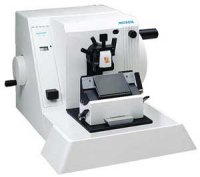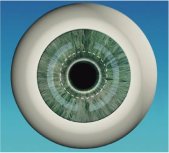Over the past several years, there hasn't been any eye topic more discussed by the general public than refractive surgical vision correction. Although the "dangling carrot" of perfect vision corrected through surgical means is hard to ignore, permanently altering the eye structures through surgical intervention is not something that should be done without deep understanding and careful considerations of the long-term implications.

You have seen the advertisements. It looks like a recipe for alphabet soup - RK , AK , ALK , PRK , LASIK, LASEK , iLASIK , ICR , ICL , CAOK , etc. What do all these letters stand for and what do they have to do with your eyes? Do these procedures really work? Could these procedures change the way you look at the world as well as change the way the world looks at you? Are glasses going to go the way of the dinosaur because of this miraculous surgical meteor? Are any of these procedures right for you? Let's take a closer look at some of these so that we may answer some of these questions.


Radial Keratotomy is the use of a scalpel to put radial (like the spokes of a wheel) incisions into the cornea (clear dome on the front of the eye) and thereby alter it's shape permanently. RK has been with us for several decades, but only in the 80s and 90s became much more popularized. Although some people have done very well with RK, some have had problems with glare, poor vision that glasses do not correct, and fluctuating vision where things can be clear in the morning but become blurry by afternoon. Hyperopic shift (becoming more farsighted), and in some cases very significantly can continue to manifest and increase over years after the initial surgery. These problems have led to some frustration for the people that have had this procedure. Many of these people must be fit into contact lenses, and often very complex contact lenses, to provide them with clear stable vision.
AK is similar to RK except that the incisions are arc shaped as opposed to the radial incisions of RK. This procedure is specifically aimed at reducing astigmatism. The arc shaped scalpel cuts are put near the area of the cornea that is close to the white of the eye, and instead of radiating out like the spokes of a wheel (as in RK), they follow the same path as the tire. This procedure is commonly combined with RK), so in addition to the spoke-like cuts, these additional transverse cuts are also incorporated into the procedure.

ALK - Automated Lamellar Keratoplasty has generally been reserved for high amounts of near sightedness and is done by using an automated scalpel that makes a thin slice to the front side of the cornea. This procedure has been around for many decades and in fact was the procedure that was coupled with PRK, to form the much more popular procedure known as LASIK. The original ALK procedure used only microtomes (knives) to "shave down" the thickness of the cornea but when the excimer laser was introduced for PRK yielding better and more predictable results than the microtomes alone, the ALK procedure was joined with the PRK procedure to form the LASIK procedure.


PhotoRefractive Keratectomy is the use of a cool excimer laser beam to permanently reshape the cornea such that near sightedness and astigmatism can be reduced. This laser has been used since the end of the eighties. The results with this procedure are at least initially generally good for myopic correction. The pre-op and post-op care are as important as the actual surgical procedure to obtain the best possible result. The initial concerns are halos, glare, and dry eye. The major concerns with this procedure are the long-term implications over the loss of Bowman's Membrane (this is the tough protective layer of the cornea located just below the front surface of the cornea) that is pemanently removed by the laser. PRK is also a procedure, that by design removes corneal stromal tissue, which leaves the cornea thinner. As a result of this thinning, a condition known as corneal ectasia can develop in the years following the procedure. Corneal ectasia is the loss of the proper shape of the cornea which results in an optical distortion that can be very difficult to correct and provide normal vision. Dry eye can also persist and in fact even worsen for the rest of one's life.


Laser Assisted In-Situ Keratomileusis (also Laser Intrastromal Keratomileusis) is actually the combination of ALK and PRK. The automated scalpel makes a "cap" of cornea which is held back while the laser reshapes the cornea. The "cap" is then put back into place over the reshaped area of the cornea. This procedure has benefits over both the individual PRK and ALK procedures in that the higher amounts of near sightedness can be better addressed with the precision of the laser. The recovery period for this procedure is generally much faster than that of the PRK procedure alone. Although PRK and LASIK can both give comparable results, LASIK has rapidly become the procedure of choice because of the faster recovery period. There have been many "variations on a theme" with this procedure, as it has continued to evolve. There is LASEK or eLASIK which involves the epithelium being removed before the laser energy is applied. There is Intralase, "Bladeless Lasik," or "All Laser Lasik" which involves the femtosecond laser cutting the flap structure while the excimer laser then ablates the stromal tissue. There is even now "ReLEx Smile" procedure (Refractive LEnticule Extraction) SMILE (SMall Incision Lenticule Extraction) which is using the femtosecond laser to carve out and remove a stromal lenticule of corneal tissue so there is no flap created nor is the excimer laser needed to ablate the tissue. The concerns with all of these procedures are still the same and generally divided into two broad categories - immediate surgical problems and long-term flap and/or corneal thinning problems. The immediate surgical problems can range from mechanical surgical problems in creating the flap incorrectly or decentered, to the removal of corneal tissue in an uneven fashion, to the creation of a poor transition zone between the treated and non-treated areas of the cornea. The problems after surgery can be from improper or irregular healing, infection, persistent dry eye, epithelial ingrowth, stromal inflammation (DLK) also known as "Sands of The Sahara Syndrome", decreased contrast, scarring, flap dislodgement, corneal ectasia, etc. When choosing a permanently altering invasive surgery on a healthy cornea, it is certainly important to realize that there is much more to consider than just the desire for 20/20 vision.


IntraCorneal Ring (ICR) or IntraStromal Corneal Ring (ISCR) is the implantation of an "arc(s) of contact lens material" into the cornea. This procedure has the additional benefit of being reversible - the "arc(s)" can be removed. This is being marketed under the trade name of Intacs. More recently this has been used to treat certain keratoconus cases with the idea that the arcs of plastic can add physical support to the keratoconic cornea. Optically however, intacs have largely been poor at improving uncorrected vision. Additionally, fitting contact lenses over the implanted arcs is exceedingly difficult. The concerns over this procedure is that the implanted plastic can sometimes cause some strange optical effects, including glare and reflections, and although the arcs are removable, the cornea after this procedure is not the same as it was prior to the implantation, and the healing time can be very uncomfortable and lengthy.
ICL - Implantable Contact Lens is a procedure that is done by placing a contact lens inside the eye. This procedure is also theoretically reversible, although this would carry additional risk. This procedure has still only really been done in limited numbers so more data needs to be collected on this procedure, but due to the location where the lens is implanted, there are significant limitations because there just isn't very much physical room to accommodate the implanted the lens. Among some of the complications that manifested as a result of this procedure, premature cataract formation was fairly common.
The above procedures are all surgical procedures which means that some part of the eye structure has been permanently altered (ICR and ICL in theory are reversible from the prescription aspect but the eye has still been permanently altered). Although the structural change is permanent, the need for an optical device to correct one's prescription is not. The eye will continue to change after surgery as it was destined to change because surgery does not alter this course. The purpose of these surgical procedures is to greatly reduce the need for prescription glasses but not to replace glasses forever. At some point in a person's life, the need for two separate prescriptions (presbyopia) for distance and near will also become a factor. This applies to everyone - even if you are one of the lucky ones that doesn't wear glasses for one or the other now, you will need one of these eventually. This is because the eyes will lose their ability to focus close objects as sure as tomorrow you and I will be one day older. All of these refractive surgical procedures can correct only one prescription and can not address the changing needs over the eyes' lifetime. An optical aid at some point will be necessary for either distance (driving, television) or near (reading, computer). Still one of these procedures may better address your current lifestyle than your glasses or contact lenses and if so, the short and long term risks would then need to be considered.
CAOK is the use of contact lenses to gently
reshape the cornea to reduce the prescription, in a similar way to the surgical procedures. This procedure
also has been available for many decades but even today is still not generally well known. I have personally
heard countless times, people who have already had one of the refractive surgical procedures comment that had they
known that CAOK was available, they would
have chosen it over the surgical procedure, due to the greater safety and long term benefits. The major
difference in CAOK from it's surgical cousins
is that it is totally and truly reversible. If the lenses are not worn in a continued retainer fashion, the
prescription and eye will return to it's pre-procedure state. This reversibility gives
CAOK an increased measure of safety as
compared to the surgical procedures. Additionally, because it is reversible it is capable of dynamically
addressing the ongoing changes that the eye will go through for a lifetime. This is a very large factor to
consider because for many years to come, if not your entire lifetime, this procedure will continue to provide clear
vision without the need of an optical device, for both distance and near. Depending on the particular set of eyes,
the retainer lenses are almost always worn only during sleep hours and are removed for all waking hours. Yes, that is a
little backwards to conventional contact lenses. Everyone needs to sleep, at some time, so this schedule is a
very simple schedule to maintain. The most commonly asked questions with regard to
CAOK are;
1) Can I see with the lenses on?
2) Do the lenses hurt?
The lenses give clear vision while they are worn, do not hurt and do not feel any different than any other
contact lenses. The magic here is that when the lenses are removed, the vision is still clear! Additionally,
there is no surgical risk.
Have you been wearing glasses for countless years? Have you always dreamed of waking up and being able to see the clock? Can you imagine swimming without fear of losing a contact lens? How about golfing and tennis with no prescription glasses or even contact lenses? The ability to enter a mall or a smoke-filled room and not have your contact lenses dry out? Dry eyes and contact lens intolerance are cited as the most common reasons people consider refractive surgery. Refractive surgery most often contributes to worsening the dry eye symptoms and when additional optical help is needed, returning to contact lenses can be very difficult and require very specially designed contact lenses. To the contrary, CAOK resolves both the dry eye symptoms from contact lens wear and contact lens intolerance and does not exacerbate dry eye symptomes. Perhaps it is time for you to investigate further what some of your real choices are with regard to correcting your visual blur.
